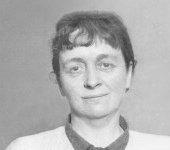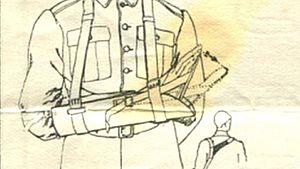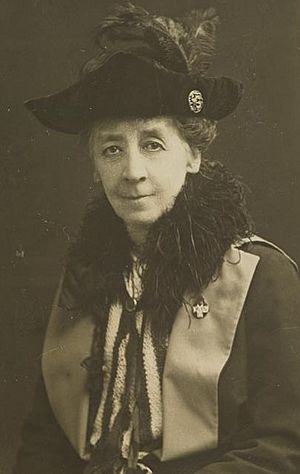Anne Acheson facts for kids
Quick facts for kids
Anne Acheson
CBE FRBC
|
|
|---|---|

Anne Crawford Acheson
|
|
| Born | 5 August 1882 |
| Died | 13 March 1962 (aged 79) |
| Nationality | British Irish |
| Education | Belfast School of Art, Royal College of Art |
| Known for | Medical plaster and Sculpture |
Anne Crawford Acheson (born August 5, 1882 – died March 13, 1962) was a talented sculptor from Britain and Ireland. She is famous for helping to invent a special way to make plaster casts. These casts were used to help soldiers with broken bones during wartime.
Anne Acheson showed her sculptures at the Royal Academy in London. Her art was also displayed in other countries. She received a special award called the CBE in 1919. During the First World War, she volunteered her time to help. She worked for an organization that supplied medical items.
Contents
Anne Acheson's Life and Art
Anne Acheson was born in Portadown, County Armagh, which is now part of Northern Ireland. Her father, John Acheson, was a manufacturer. Anne went to school at Victoria College, Belfast. She then studied art at the Belfast School of Art. Later, she attended the Royal College of Art in London. There, she learned sculpture from a famous teacher named Édouard Lantéri.
Anne Acheson first showed her artwork at the Royal Academy in 1913. Her sculpture, called The Pixie, was chosen for the exhibition. Over the next 40 years, many of her sculptures were shown there. She had 30 sculptures featured in 22 different exhibitions.
Her artworks included small statues, detailed portrait heads, and garden figures. At first, she carved her sculptures from wood. Later, she started using metal, stone, or concrete for her art.
Helping During Wartime
During the First World War, Anne Acheson volunteered with the Surgical Requisites Association. This group provided medical supplies. It was started by Queen Mary's Needlework Guild.
Anne Acheson and another sculptor, Elinor Hallé, saw many soldiers returning from the war. Their broken limbs were often held with simple wooden splints and bandages. Anne Acheson had a clever idea. She suggested making a plaster cast of the injured limb. Once the plaster hardened, they could wrap papier-mâché around it. This strong, light support would help the broken limb heal better.
This idea came from her experience using plaster of Paris in her own sculptures. The new papier-mâché splints fit the body perfectly. They helped limbs heal faster and gave them proper support. Using plaster of Paris for medical casts became very popular. Doctors still use this method today.
In 1938, Anne Acheson made history. She was the first woman to be chosen as a fellow of the Royal British Society of Sculptors.
During the Second World War, Anne Acheson volunteered again. She learned new skills like precision engineering and drafting. She also worked for the Red Cross. After both wars, Anne Acheson continued her work as an artist in Northern Ireland.
Remembering Anne Acheson
Anne Acheson's achievements are remembered in her hometown. On September 27, 2018, a special blue plaque was put up. It is located at the First Presbyterian Church in Bridge Street, Portadown. Her great-nephew, Rev John Glasgow Faris, unveiled it.
An art show called Anne Acheson: A Sculptor in War and Peace was held in 2019. It took place at the Millennium Court Arts Centre in Portadown.
Notable Sculptures
Here are some of Anne Acheson's sculptures. The dates show when they were first displayed.
- The Pixie (1910)
- The Leprechaun (1914)
- Echo Mocking (1914)
- Sally (around 1923)
- The Imp (1924)
- Trio (1924, likely)
- Lead Mask for Garden Decoration (1924, likely)
- The Gossamer Thread (1924, likely)
- Tangle (Pewter Statuette) (1926)
- Mischief (1927)
- Flora M'Flimsy (1927)
- Gertrude Bell (bust for Gertrude Bell Memorial) (around 1926-1929)
- Harriet Emily (Lead Garden Figure) (1930)
- Harriet Glasgow Acheson, Bronze Medallion (1934)
- Barbara (Glazed Pottery) (1936)
- Saint Brigit (Glazed Pottery) (1936)
- Mother and Child (Glazed Pottery) (1936)
- Harriet Emily (1938)
- Fountain figure (around 1944)
- The Sacred Bull (1948)
- Virginia (1949)
- Squirrel (1950, likely)
- River Nymph (Walnut Wood) (1950)
See Also
 In Spanish: Anne Acheson para niños
In Spanish: Anne Acheson para niños



